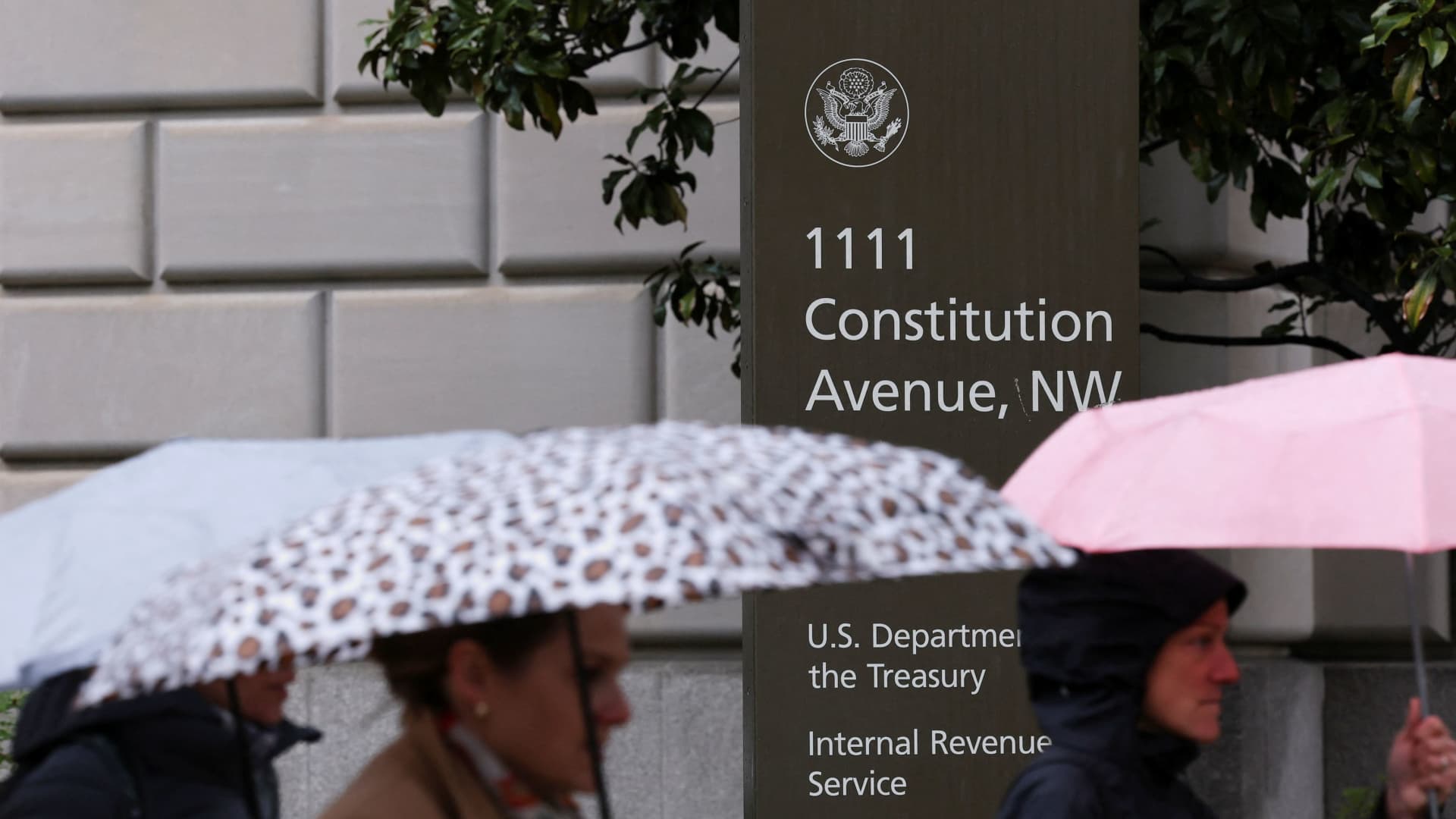Global Trends and Politics
Breaking Down Barriers: Strategies for Increasing Diversity in Political Campaigns

The Importance of Diversity in Political Hiring
Diversity in political hiring is crucial for creating a more representative government that truly reflects the needs and concerns of the people. However, the reality is that many political campaigns continue to struggle with diversity, leading to a lack of representation and a disconnect between the government and the people. In this article, we will explore the strategies for increasing diversity in political campaigns and breaking down the barriers that prevent it.
Understanding the Challenges
Historical and Structural Barriers
The lack of diversity in political hiring is not a new phenomenon. Historically, political campaigns have been dominated by white, affluent, and well-connected individuals, making it difficult for people from diverse backgrounds to break into the system. This has led to a lack of representation and a lack of understanding of the needs and concerns of marginalized communities.
Biases and Stereotypes
Biases and stereotypes also play a significant role in the lack of diversity in political hiring. Many political campaigns rely on traditional networks and connections, which can lead to a lack of diversity in candidate selection. Additionally, biases and stereotypes can prevent candidates from diverse backgrounds from being taken seriously or given opportunities to showcase their skills and qualifications.
Strategies for Increasing Diversity
Inclusive Hiring Practices
One strategy for increasing diversity in political campaigns is to implement inclusive hiring practices. This can include using blind hiring processes, where candidates’ names and addresses are removed from their applications, and using a diverse pool of interviewers. Additionally, campaigns can use objective criteria, such as skills and qualifications, when selecting candidates.
Diverse Candidate Selection
Another strategy is to actively seek out candidates from diverse backgrounds. This can include targeting historically underrepresented communities, such as women, people of color, and individuals with disabilities. Campaigns can also use social media and other outreach efforts to attract a diverse pool of candidates.
Mentorship and Training
Mentorship and training programs can also help increase diversity in political campaigns. These programs can provide training and support for candidates from diverse backgrounds, helping them to build skills and confidence. Additionally, mentorship programs can connect candidates with experienced campaign professionals who can provide guidance and support.
Measuring Progress
Finally, it is essential to measure progress and track diversity metrics. Campaigns can use diversity metrics, such as the percentage of candidates from diverse backgrounds, to track progress and identify areas for improvement.
Real-Life Examples
The 2020 US Presidential Election
The 2020 US presidential election saw a significant increase in diversity among candidates, with a record number of women and people of color running for office. The campaigns of Democratic candidates, such as Kamala Harris and Tulsi Gabbard, drew attention to the importance of diversity and inclusion in political hiring.
The UK’s Labour Party
In the UK, the Labour Party has made a concerted effort to increase diversity in its hiring practices. The party has implemented blind hiring processes and has targeted historically underrepresented communities, such as women and people of color. As a result, the party has seen an increase in diversity among its candidates and elected officials.
Conclusion
Breaking down barriers and increasing diversity in political campaigns requires a concerted effort and a commitment to inclusivity. By implementing inclusive hiring practices, seeking out diverse candidates, providing mentorship and training, and measuring progress, campaigns can create a more representative government that truly reflects the needs and concerns of the people. As we move forward, it is essential that we continue to prioritize diversity and inclusion in political hiring, ensuring that our government truly represents the diverse needs and concerns of our communities.
FAQs
Q: What are some strategies for increasing diversity in political campaigns?
A: Some strategies for increasing diversity in political campaigns include implementing inclusive hiring practices, seeking out diverse candidates, providing mentorship and training, and measuring progress.
Q: How can campaigns attract a diverse pool of candidates?
A: Campaigns can attract a diverse pool of candidates by targeting historically underrepresented communities, using social media and other outreach efforts, and providing training and support for candidates from diverse backgrounds.
Q: What are some challenges to increasing diversity in political campaigns?
A: Some challenges to increasing diversity in political campaigns include historical and structural barriers, biases and stereotypes, and a lack of understanding of the needs and concerns of marginalized communities.
Q: Why is diversity in political hiring important?
A: Diversity in political hiring is important because it helps to create a more representative government that truly reflects the needs and concerns of the people.
Global Trends and Politics
The Power of Empathy: How Managers Can Bridge the Political Divide

As the political landscape continues to polarize, political impacts on workplaces have become a pressing concern for managers and employees alike. With the rise of social media, it’s easier than ever for personal beliefs and opinions to spill over into the workplace, creating tension and conflict among colleagues. In this article, we’ll explore the importance of empathy in bridging the political divide and provide practical tips for managers to create a more inclusive and harmonious work environment.
Understanding the Impact of Politics on the Workplace
The 2016 US presidential election highlighted the deepening political divide in the country, with many employees feeling uncomfortable discussing politics at work. A survey by the Society for Human Resource Management found that 44% of employees reported feeling stressed or anxious about discussing politics at work, while 26% reported avoiding discussions altogether. This phenomenon is not unique to the US, as politics has become a sensitive topic in workplaces worldwide.
The Consequences of a Polarized Workplace
A polarized workplace can have serious consequences, including decreased productivity, increased turnover, and damage to the company’s reputation. When employees feel uncomfortable or excluded, they are less likely to engage with their work and more likely to seek new opportunities. Moreover, a toxic work environment can drive away top talent and make it challenging to attract new employees.
The Power of Empathy in Bridging the Divide
Empathy is the ability to understand and share the feelings of others, and it’s a crucial skill for managers to possess in today’s polarized world. By putting themselves in their employees’ shoes, managers can create a safe and inclusive environment where everyone feels valued and respected. Empathy is not about agreeing with someone’s perspective, but rather about understanding where they’re coming from and acknowledging their emotions.
Practicing Active Listening
Active listening is a fundamental aspect of empathy, and it involves fully concentrating on what the other person is saying, rather than just hearing their words. When managers practice active listening, they can pick up on subtle cues, such as body language and tone of voice, which can help them better understand their employees’ concerns and emotions. By repeating back what they’ve heard and asking clarifying questions, managers can ensure that they understand their employees’ perspectives and show that they care.
Creating a Culture of Inclusion
Creating a culture of inclusion is critical to bridging the political divide, and it requires a deliberate effort from managers and employees alike. This involves fostering an environment where everyone feels welcome and valued, regardless of their background, beliefs, or opinions. By promoting diversity and inclusion, companies can tap into the unique perspectives and experiences of their employees, driving innovation and creativity.
Encouraging Open Communication
Open communication is essential to creating a culture of inclusion, and it involves encouraging employees to share their thoughts and opinions without fear of judgment or retribution. Managers can foster open communication by holding regular town hall meetings, creating anonymous feedback channels, and recognizing and rewarding employees who contribute to the discussion. By creating a safe and supportive environment, managers can encourage employees to engage in respectful and constructive dialogue, even when they disagree.
Managing Conflict and Difficult Conversations
Conflict is inevitable in any workplace, and it’s essential for managers to know how to manage difficult conversations and resolve conflicts in a constructive manner. This involves staying calm and composed, listening actively, and focusing on the issue rather than the person. By addressing conflicts promptly and fairly, managers can prevent them from escalating and create a more positive and productive work environment.
Using “I” Statements
Using “I” statements is a powerful technique for managing conflict and difficult conversations, as it helps to avoid blame and defensiveness. By expressing their thoughts and feelings using “I” statements, managers can take ownership of their emotions and avoid attacking or criticizing others. For example, instead of saying “You always do this,” a manager could say “I feel frustrated when this happens, can we find a way to improve the process?”
Leading by Example
Managers set the tone for their teams, and it’s essential for them to model the behavior they expect from their employees. By demonstrating empathy, inclusivity, and respect, managers can create a positive and supportive work environment that encourages employees to do the same. This involves being aware of their own biases and prejudices, being open to feedback and criticism, and taking responsibility for their actions.
Embracing Diversity and Inclusion
Embracing diversity and inclusion is critical to creating a positive and supportive work environment, and it involves recognizing and valuing the unique perspectives and experiences of all employees. By promoting diversity and inclusion, companies can tap into the creative potential of their employees, drive innovation, and improve their bottom line. Managers can embrace diversity and inclusion by creating employee resource groups, providing training and development opportunities, and recognizing and rewarding employees who contribute to the discussion.
Conclusion
In conclusion, bridging the political divide in the workplace requires empathy, understanding, and a commitment to creating a culture of inclusion. By practicing active listening, encouraging open communication, managing conflict and difficult conversations, and leading by example, managers can create a positive and supportive work environment that encourages employees to thrive. Remember, empathy is not a weakness, but a strength that can help you build stronger relationships, drive innovation, and improve your bottom line.
Frequently Asked Questions
Q: How can I create a safe and inclusive environment for my employees?
A: Creating a safe and inclusive environment involves fostering an environment where everyone feels welcome and valued, regardless of their background, beliefs, or opinions. This can be achieved by promoting diversity and inclusion, encouraging open communication, and recognizing and rewarding employees who contribute to the discussion.
Q: How can I manage conflict and difficult conversations in the workplace?
A: Managing conflict and difficult conversations involves staying calm and composed, listening actively, and focusing on the issue rather than the person. By addressing conflicts promptly and fairly, managers can prevent them from escalating and create a more positive and productive work environment.
Q: Why is empathy important in the workplace?
A: Empathy is essential in the workplace because it helps to create a safe and inclusive environment, build stronger relationships, and drive innovation. By putting themselves in their employees’ shoes, managers can understand their concerns and emotions, and create a more positive and productive work environment.
Q: How can I promote diversity and inclusion in my workplace?
A: Promoting diversity and inclusion involves recognizing and valuing the unique perspectives and experiences of all employees. This can be achieved by creating employee resource groups, providing training and development opportunities, and recognizing and rewarding employees who contribute to the discussion.
Q: What are the consequences of a polarized workplace?
A: A polarized workplace can have serious consequences, including decreased productivity, increased turnover, and damage to the company’s reputation. When employees feel uncomfortable or excluded, they are less likely to engage with their work and more likely to seek new opportunities.
Global Trends and Politics
Chipotle Expands in Mexico Amid Trump Tariffs

Introduction to Chipotle’s Expansion
Chipotle Mexican Grill will open its first location in Mexico early next year as the latest stage in its international expansion. The company announced Monday that it has signed a development agreement with Alsea, which operates Latin American and European locations of Starbucks, Domino’s Pizza, and Burger King, among other chains.
Expansion Plans
After the initial restaurant opens in 2026, Chipotle plans to explore "additional expansion markets in the region," which could mean broader Latin American development. The deal to expand in Mexico comes as President Donald Trump wages a trade war with the country, straining the relationship between the two neighbors. Avocados from Mexico were originally subject to a 25% tariff until he paused new duties on goods compliant with the United States-Mexico-Canada Agreement. While Chipotle has diversified its avocado sourcing in recent years, it still imports about half of its avocados from Mexico.
International Presence
In recent years, Chipotle has been trying to expand internationally, after decades focusing almost entirely on its U.S. business. The company operates 58 locations in Canada, 20 in the United Kingdom, six in France and two in Germany. Chipotle also currently has three restaurants in Kuwait and two in the United Arab Emirates through a deal with Alshaya Group.
Market Reception
Chipotle is betting that Mexico’s familiarity with its ingredients and appreciation for fresh food will win over consumers, according to a statement from Nate Lawton, Chipotle’s chief business development officer. However, U.S. interpretations of Mexican food don’t always resonate in the market; Yum Brands’ Taco Bell has twice attempted to expand into Mexico, but both efforts failed quickly.
Conclusion
Chipotle’s expansion into Mexico marks a significant step in the company’s international growth strategy. With its development agreement with Alsea, Chipotle is well-positioned to tap into the Mexican market and potentially expand into other Latin American countries. However, the company will need to navigate the complexities of the local market and consumer preferences to succeed.
FAQs
Q: When will Chipotle open its first location in Mexico?
A: Chipotle will open its first location in Mexico early next year.
Q: Who is Chipotle’s partner in its Mexican expansion?
A: Chipotle has signed a development agreement with Alsea, which operates Latin American and European locations of Starbucks, Domino’s Pizza, and Burger King, among other chains.
Q: What is the potential for further expansion in the region?
A: After the initial restaurant opens, Chipotle plans to explore "additional expansion markets in the region," which could mean broader Latin American development.
Q: How will Chipotle’s U.S. interpretation of Mexican food be received in Mexico?
A: While Chipotle is betting that Mexico’s familiarity with its ingredients and appreciation for fresh food will win over consumers, U.S. interpretations of Mexican food don’t always resonate in the market, as seen in the failed attempts by Yum Brands’ Taco Bell to expand into Mexico.
Global Trends and Politics
IRS staff cuts mean fewer audits of the wealthy

Introduction to the IRS Crisis
The IRS has been facing a significant crisis in recent times, with a substantial reduction in staff and budget cuts. This has led to a decline in the agency’s ability to audit and enforce tax laws, particularly for high-net-worth individuals and companies. One of the affected IRS agents, Wesley Stanovsek, was a young and tech-savvy accountant who specialized in S-corps, trusts, and partnerships. He was hired by the IRS’s High Wealth division in 2024 but was fired in February, along with other probationary agents.
The Impact of Staff Cuts on Tax Enforcement
The firing of Stanovsek and other agents has had a significant impact on the IRS’s ability to enforce tax laws. The cases that Stanovsek was working on, including two involving partnerships and one involving a wealthy sports team owner, were dropped due to a lack of staff. This is not an isolated incident, as many other agents have also been let go, resulting in a substantial reduction in the agency’s enforcement capabilities. The IRS is expected to lose about a third of its staff after firings and buyouts, which will further exacerbate the problem.
The Consequences for Taxpayers
The reduction in IRS staff and enforcement capabilities has significant consequences for taxpayers, particularly high-net-worth individuals and companies. With fewer agents to audit and review tax returns, many taxpayers may be able to avoid paying their fair share of taxes. Attorneys say that many of their audits have gone dark, and with the statute of limitations on an assessment typically limited to three years after the taxes are filed, many are expected to expire without attention. Some wealthy taxpayers are even asking their attorneys and accountants whether they need to bother filing returns, but the answer is an emphatic yes, as the IRS has historical data on every taxpayer who has ever filed, and a missing filing in one year would immediately raise an audit flag.
The Rise of Aggressive Tax-Planning Techniques
The understaffed IRS may lead to a new era in which taxpayers and their accountants push the envelope with aggressive tax-planning techniques that may escape the review of the agency. Kathleen Pakenham, a partner at Vinson & Elkins, warns that this is exactly the kind of environment in which tax shelters are devised and sold. A Yale Budget Lab study found that if the IRS staff cuts endure for the next 10 years, tax revenue will fall at least $160 billion over the next decade.
The Role of AI in Tax Enforcement
Treasury Secretary Scott Bessent has stated that AI and other new technologies will allow the IRS to be more efficient and even do a better job at collections and service. However, attorneys say that while AI is highly effective at selecting the types of returns that might contain certain kinds of abuses or strategies, it takes a highly skilled auditor with years of experience to ask the right follow-up questions and make judgments. The use of AI in tax enforcement is still in its early stages, and its effectiveness remains to be seen.
Conclusion
The IRS crisis has significant implications for tax enforcement and revenue collection. The reduction in staff and budget cuts has led to a decline in the agency’s ability to audit and enforce tax laws, particularly for high-net-worth individuals and companies. The consequences for taxpayers are significant, and the rise of aggressive tax-planning techniques is a major concern. The use of AI in tax enforcement may help to some extent, but it is not a replacement for human auditors and agents.
FAQs
Q: What is the impact of the IRS staff cuts on tax enforcement?
A: The reduction in IRS staff has led to a decline in the agency’s ability to audit and enforce tax laws, particularly for high-net-worth individuals and companies.
Q: What are the consequences for taxpayers?
A: The consequences for taxpayers are significant, and many may be able to avoid paying their fair share of taxes. Some wealthy taxpayers may even ask their attorneys and accountants whether they need to bother filing returns.
Q: What is the role of AI in tax enforcement?
A: AI is highly effective at selecting the types of returns that might contain certain kinds of abuses or strategies, but it takes a highly skilled auditor with years of experience to ask the right follow-up questions and make judgments.
Q: What is the expected impact on tax revenue?
A: A Yale Budget Lab study found that if the IRS staff cuts endure for the next 10 years, tax revenue will fall at least $160 billion over the next decade.
Q: What is the advice for taxpayers?
A: Taxpayers should continue to file their returns and comply with tax laws, as the IRS has historical data on every taxpayer who has ever filed, and a missing filing in one year would immediately raise an audit flag.
-

 Career Advice4 months ago
Career Advice4 months agoInterview with Dr. Kristy K. Taylor, WORxK Global News Magazine Founder
-

 Diversity and Inclusion (DEIA)4 months ago
Diversity and Inclusion (DEIA)4 months agoSarah Herrlinger Talks AirPods Pro Hearing Aid
-

 Career Advice4 months ago
Career Advice4 months agoNetWork Your Way to Success: Top Tips for Maximizing Your Professional Network
-

 Changemaker Interviews4 months ago
Changemaker Interviews4 months agoUnlocking Human Potential: Kim Groshek’s Journey to Transforming Leadership and Stress Resilience
-

 Diversity and Inclusion (DEIA)4 months ago
Diversity and Inclusion (DEIA)4 months agoThe Power of Belonging: Why Feeling Accepted Matters in the Workplace
-

 Global Trends and Politics4 months ago
Global Trends and Politics4 months agoHealth-care stocks fall after Warren PBM bill, Brian Thompson shooting
-

 Global Trends and Politics4 months ago
Global Trends and Politics4 months agoUnionization Goes Mainstream: How the Changing Workforce is Driving Demand for Collective Bargaining
-

 Training and Development4 months ago
Training and Development4 months agoLevel Up: How Upskilling Can Help You Stay Ahead of the Curve in a Rapidly Changing Industry









